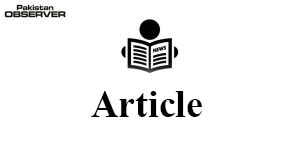Gender inequality in education
GENDER inequality refers to the variability in the conditions that women and men encounter when exercising their full human rights.
In 2015, 193 nations have agreed to the Sustainable Development Agenda (2030), which comprises 17 Sustainable Development Goals (SDGs), several of which address gender inequality to varying degrees.
Goal-4 specifically focuses on education, in particular, stressing the importance of vigorously striving for universal education goals.
Goal-5 emphasizes gender equality and women empowerment that ensures the equal participation of women in the process of decision-making process either social, political, or economic.
Goal-8 promotes and encourages the creation of a healthy and positive work environment for women that will upraise sustainable economic growth.
The premise behind afore mentioned commitments is that granting women equal access to education, as well as political and economic bodies, will assist in the development of more sustainable economies and societies.
In Pakistan, there is a substantial gender disparity in education.Pakistan is a patriarchal society in which women face a wide range of discrimination, leading to a low social, economic, and political status.
Pakistan is positioned fourth-worst in the world for gender parity in the 2021 Global Gender Gap Report.
In terms of educational attainment, Pakistan is ranked 144thout of 156 countries in the report.
Pakistan’s entire education system has a 13 percent gender disparity in enrollment.
In addition, just 46.5 percent of women are literate, 61.6 percent attended primary school, 34.2 percent attained high school, and 8.3 percent attended tertiary education.
The report further revealed that Pakistan will need 136 years to bridge the gender disparity at its present rate of progress.
When gender inequality in education rises, it has an impact on a family’s socioeconomic position.
While on the macro level, gender disparities in education lead to the underutilization of human capital, which has the potential to stifle economic growth.
As a corollary, the government should reassess its laws and norms in order to expeditiously bridge the gender gap.
Explicitly, women’s education improves social objectives like educating the coming generation, preventing child mortality, reducing fertility, and enhancing child nutrition.
On the flip side, such social goals have a progressive impact on the economy, for instance, reducing poverty, improving labour productivity, human development, and eventually driving economic growth.
In a nutshell, improved gender parity and women’s participation in economic activities are strongly tied to social and economic progress.
Women’s education, health, and autonomy are essential for human development and long-term stability.
Pakistan tends to lag behind in all critical parameters.The government must strive and ensure that all of its population has access to education.
According to UNICEF, 22.8 million children aged 5 to 16 are out of school, with girls accounting for over 60% of these children.
To address the issue of school dropouts, the government should build additional schools and train newly recruited teachers.
Education alone is insufficient to enable women to enter the labour force in Pakistan due to traditional dogmas and cultural customs.
Implementing measures aimed at reducing household care obligations (for example, free daycare, and positive discrimination for female employees) will certainly boost women’s participation in economic activities.
These prejudices can only be addressed by spreading awareness.
There is also a pressing need to modify societal customs and attitudes that discriminate against women through public awareness and education efforts.
Women’s growing importance to the general wellbeing of their families and society must be conveyed through these efforts.
—Dr Muhammad Abdul Kamal is as Assistant Professor at Abdul Wali Khan University, Mardan while Nafeesa Gul Qazi is graduate student at same university.










